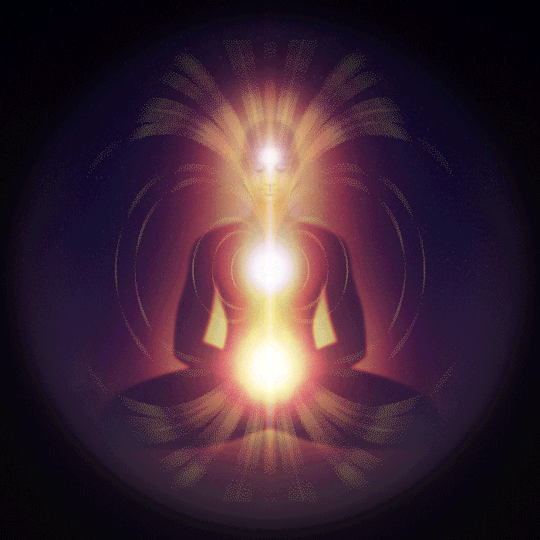Search your article
Light on Pranayama By B.K.S Iyengar
Light on Pranayama By Iyengar
It is as difficult to explain Prana as it is to explain God. Prana is the energy permeating the universe at all levels. It is physical, mental, intellectual, sexual, spiritual and cosmic energy. All vibrating energies are Prana. All physical energies such as heat, light, gravity, magnetism and electricity are also Prana. It is the hidden or potential energy in all beings, released to the fullest extent in times of danger. It is the prime mover of all activity. It is energy which creates, protects and destroys. Vigour, power, vitality, life and spirit are all forms of prana. According to the Upanishads, prana is the principle of life and consciousness. It is equated with the real Self (Atma). Prana is the breath of life of all beings in the universe. They are born through and live by it, and when they die their individual breath dissolves into the cosmic breath. Prana is the hub of the Wheel of Life. Everything is established in it. It permeates the life-giving sun, the clouds, the winds (vayusj, the earth (prithvi), and all forms of matter. It is being (sat) and non-being (asat). It is the source of all knowledge. It is the Cosmic Personality {the pumsa) of Sartikhya philosophy. Therefore the Yogi takes refuge in prana. Prana is usually translated as breath, yet this is only one of its many manifestations in the human body. If breathing stops, so does life. Ancient Indian sages knew that all functions of the body were performed by five types of vital energy (prana-vayus). These are known as prana (here the generic term is used to designate the particular), apana, samana, udana and vyana. They are specific aspects of one vital cosmic force (vital wind), the primeval principle of existence in all beings. God is one, but the wise designate Him by various names, and so it is with prana. Prana moves in the thoracic region and controls breathing. It absorbs vital atmospheric energy. Apana moves in the lower abdomen and controls the elimination of urine, semen and faeces. Samana stokes the gastric fires, aiding digestion and maintaining the harmonious functioning of the abdominal organs. It integrates the whole of the human gross body. Udana, working through the throat (the pharynx and the larynx), controls the vocal cords and the intake of air and food. Vyana pervades the entire body, distributing the energy derived from food and breath through the arteries, veins and nerves. In pranayama, the prana-vayu is activated by the inward breath and the apana-vayu by an outward breath. Udana raises the energy from the lower spine to the brain. Vyana is essential for the function of prana and apana as it is the medium for transferring energy from the one to the other.
According to Ayurveda, vata, which is one of the three humours (dosa), is another name of prana. Charaka Sartihita explains the functions of vata in the same manner as Yoga texts explain prana. The only perceptible expression of the functioning of prana is felt in the movements of the lungs activated by inner energy, causing respiration. Chitta and prana are in constant association. Where there is chitta there prana is focused, and where prana is there chitta is focused. The chitta is like a vehicle propelled by two powerful forces, prana and vasana (desires). It moves in the direction of the more powerful force. As a ball rebounds when struck to the ground, so is the sadhaka tossed according to the movement of prana and chitta. If breath (prana) prevails, then the desires are controlled, the senses are held in check and the mind is stilled. If the force of desire prevails, the breathing becomes uneven and the mind gets agitated. In the third chapter of Hatha Yoga Pradipikd, SwStmarama states that as long as the breath and prana are still, the chitta is steady and there can be no discharge of semen (sukra). In time the sadhaka’s increased vigour is sublimated for higher and nobler pursuits. He then attains the state of urdhva-retas (urdhva = upwards; retas – semen), one who has sublimated his sexual energy and his chitta to merge in pure consciousness.
Pranayama is an art and has techniques to make the respiratory organs to move and expand intentionally, rhythmically and intensively. It consists of long, sustained subtle flow of inhalation (puraka), exhalation (rechaka) and retention of breath (kumbhaka). Puraka stimulates the system; rechaka throws out vitiated air and toxins; kumbhaka distributes the energy throughout the body. The movements include horizontal expansion, vertical ascension and circumferential extension (visslata) of the lungs and the rib cage. The processes and techniques of pranayama are explained in later chapters. This disciplined breathing helps the mind to concentrate and enables the sadhaka to attain robust health and longevity. Pranayama is not just automatic habitual breathing to keep body and soul together. Through the abundant intake of oxygen by its disciplined techniques, subtle chemical changes take place in the sadhaka’s body. The practice of asanas removes the obstructions which impede the flow of prana, and the practice of pranayama regulates that flow of prana throughout the body. It also regulates all the sadhaka’s thoughts, desires and actions, gives poise and the tremendous will-power needed to become a master of oneself.
